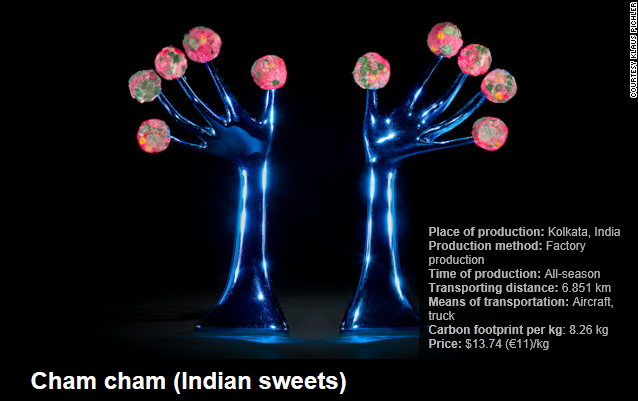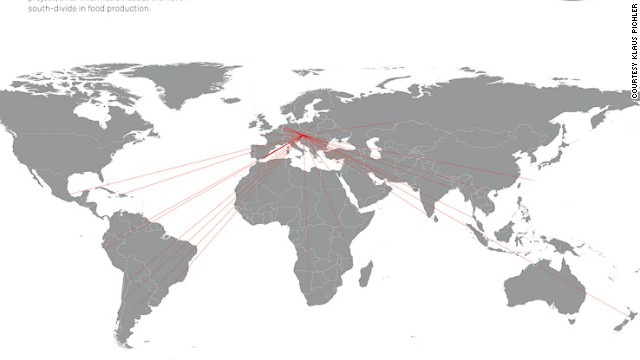How wasted food is destroying the environment
By George Webster, CNN
27 June 2012 (CNN) – At first glance, Austrian artist Klaus Pichler’s spell-binding photographs could be mistaken for a set of stylish advertisements. It takes a moment to digest — excuse the pun — that you’re staring at pictures of rotting food. Among them, a pineapple hangs suspended in negative space above an antique gold dish — its formerly yellow flesh having given way to luminous green mold; Deep purple beetroots sit snugly in an elegant porcelain vase with thin films of gray fur accumulating on their skin. The idea is simple: “To expose the contradiction between the beauty of food products — particularly as presented in the media — and the ugly reality of overconsumption and waste,” explained Pichler. The title of his new series — One Third — derives from a 2011 U.N. Food and Agriculture Organization report. It revealed a chilling statistic: A third of all food products worldwide go uneaten. Depending on the type of food in question, this figure ranges from between 25% and 75% and, altogether, it amounts to 1.3 billion tons of edible goods discarded each year.
In a world where approximately 925 million people suffer chronic hunger, the overarching moral implications are stark. But the less documented environmental consequences are almost as alarming. According to a Greenpeace report, the food industry is responsible for creating up to 30% of the world’s total annual carbon emissions. “The dominant food production system is based on fossil fuel at every level,” said Dr Martin Caraher, Professor of Food and Health Policy at London’s City University. “It needs oil to make the fertilizer, oil for the farm, oil for the food processing, oil for the packaging and oil to transport it to the shops.” But wasted food doesn’t just entail all the embedded carbon released during production and transportation. It generates more emissions once it’s discarded on the trash heap. “A significant percentage of the household food that is wasted ends up in landfill, where it produces CO2 and methane gas,” explained Richard Swannell, director of waste prevention at the UK-based Waste & Resources Action Programme (WRAP). “Methane is 23 times more potent than CO2 as a greenhouse gas,” he added. As such, WRAP calculates that every ton of food and drink wasted roughly equates to 3.8 tons of greenhouse gas emissions that could otherwise have been avoided. “Applying this factor to the quantity of food waste in the UK, leads to an estimated 17 million tons of CO2 in 2010 — the equivalent to the emissions of 1 in 5 cars on our roads,” said Swannell. And yet a recent study revealed that up to 40% of food thrown away by consumers in Europe is still in its original packaging when it lands in the dustbin. This all begs the question: Why do we squander so much? […]
Moldy matters: How wasted food is destroying the environment

